Artists
Suchitra Mattai Creates ‘New Mythologies’ While Retracing the Footsteps of Her Ancestors
In this 'Source Material' Suchitra Mattai shares how Indian sculpture and vintage finds all shape her work rooted in diaspora.
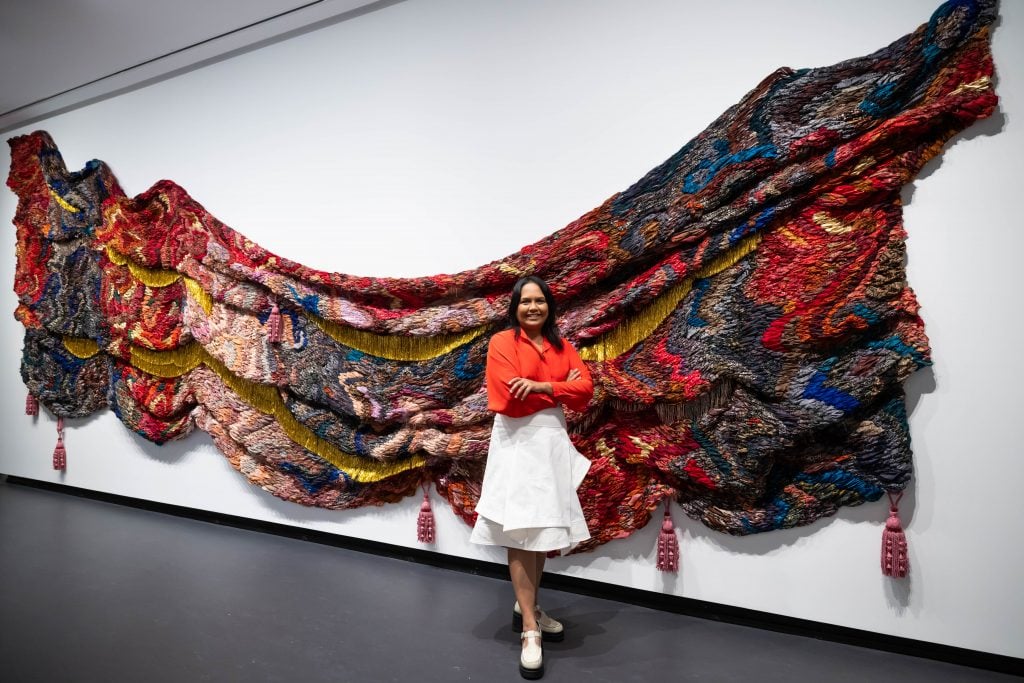
The vibrancy of the large-scale textile installations, mixed-media paintings, and colorful sculptures of Suchitra Mattai (1973–) draws in the viewer, helping the Guyanese artist tell complex stories about migration and colonialism.
Last month, Mattai opened her first solo show in Washington, D.C., at the National Museum of Women in the Arts (NMWA). Her work looks to write brown people back into a global history from which they have been left out, through a practice she calls “brown reclamation.”
Starting from found tapestries, Mattai overhauls their European figures, darkening their skin and enlivening their clothes with flashy floral appliqué, beads, and embroidery floss. It’s about depicting people of Caribbean and South Asian enjoying the type of leisure historically reserved for the white people who benefitted from their labor.
There’s a vintage needlepoint tapestry version of Jean-Honoré Fragonard’s Young Girl Reading titled Future Perfect that Mattai embellished with pearls and colorful adornments while making the title figure a brown woman. Curator Hannah Shambroom has secured a loan from the National Gallery of Art, also in D.C., to show the original 18th-century painting alongside this contemporary adaptation.
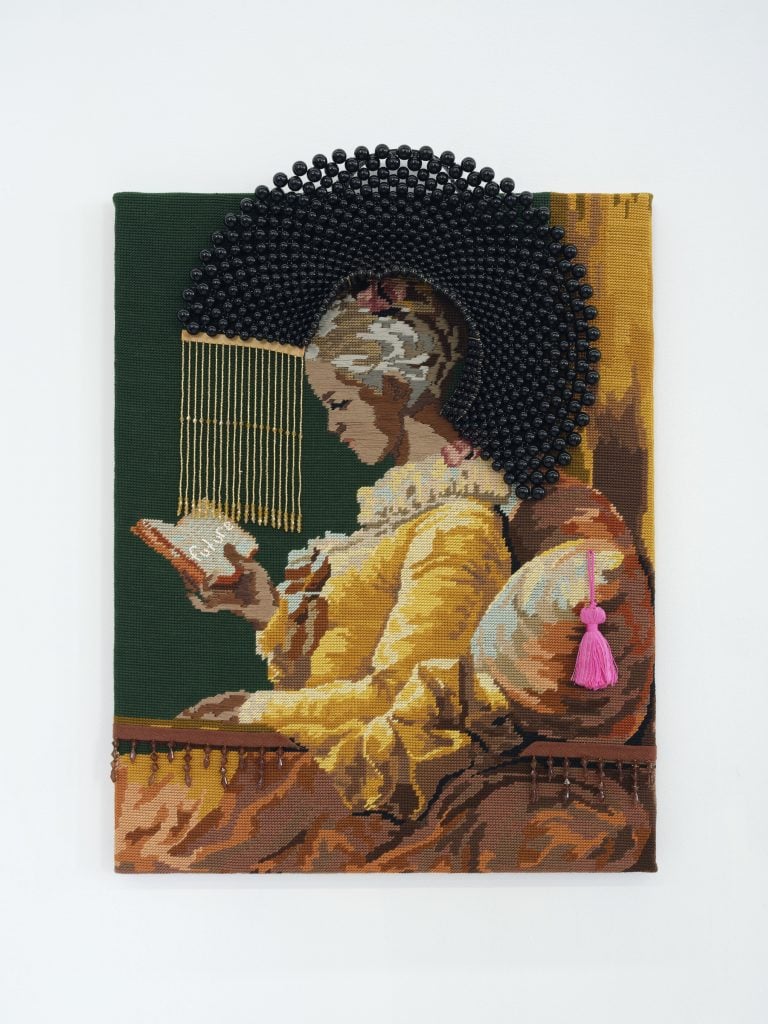
Suchrita Mattai, future perfect (2023). Photo by Heather Rasmussen, courtesy of the artist and Roberts Projects, Los Angeles.
With this body of work, Mattai is also engaging, of course, with the concept of so-called women’s work, with textile-based art all too often being relegated to the realm of craft, rather than fine art. But while embroidery skills—which the artist learned from her grandmothers—are undoubtedly functional, both in creating and repairing clothing, there is also a high level of artistic talent involved in these heavily decorated fabrics.
Many of Mattai’s works are made from repurposed saris, including garments from her own childhood, and ones that belonged to friends, family, and even strangers. Presenting these clothes in a new context, combine with different materials, is a reflection of the artist’s own complicated multicultural background.
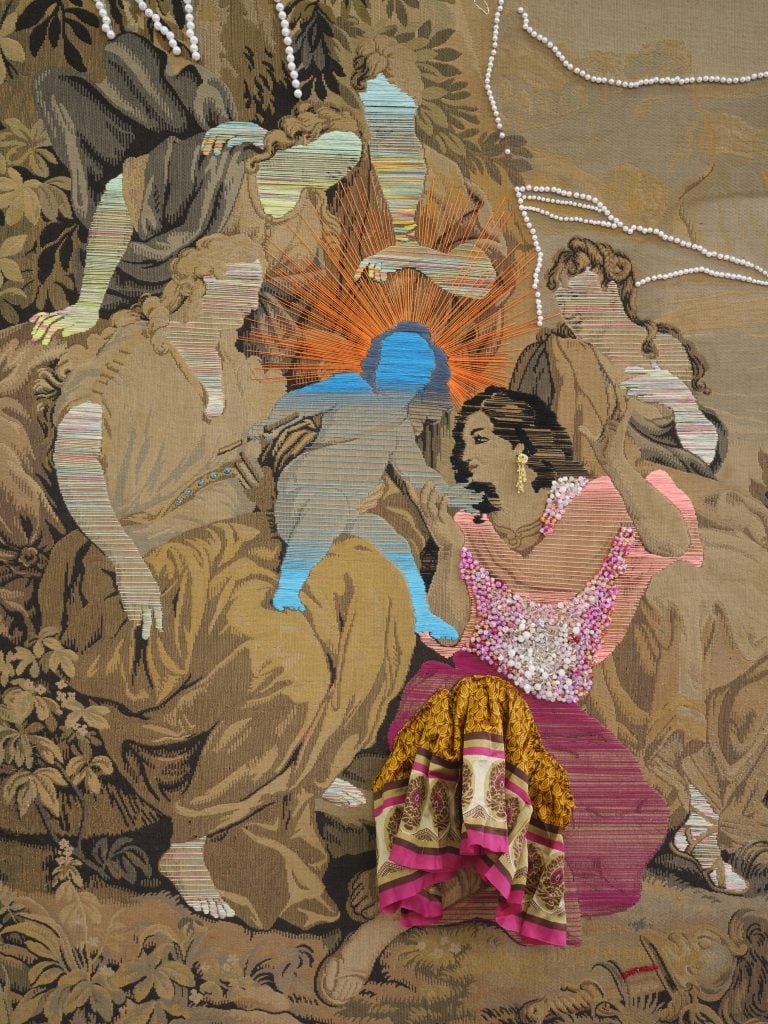
Suchitra Mattai, In the absence of power. In the presence of love (2023), detail. Collection of Julie and Bennett Roberts, Los Angeles. Photo by Heather Rasmussen, courtesy of Roberts Projects, Los Angeles; ©Suchitra Mattai.
A product of the South Asian diaspora in the Caribbean, Mattai is descended from Indian indentured laborers brought to work on sugar plantations after the end of slavery in Guyana. (The nation gained its independence from the U.K. in 1966.) Her family immigrated to Canada when Mattai was a baby, adding another layer to her global history.
At NMWA, her large-scale sculpture siren song is made from long braided and woven strips of vintage saris, creating a circular structure that hangs from the ceiling, with an arched opening into the enclosure. Inside the womblike space, viewers can look to the ceiling, to watch footage of Mattai’s own ocean crossing from India to Guyana.
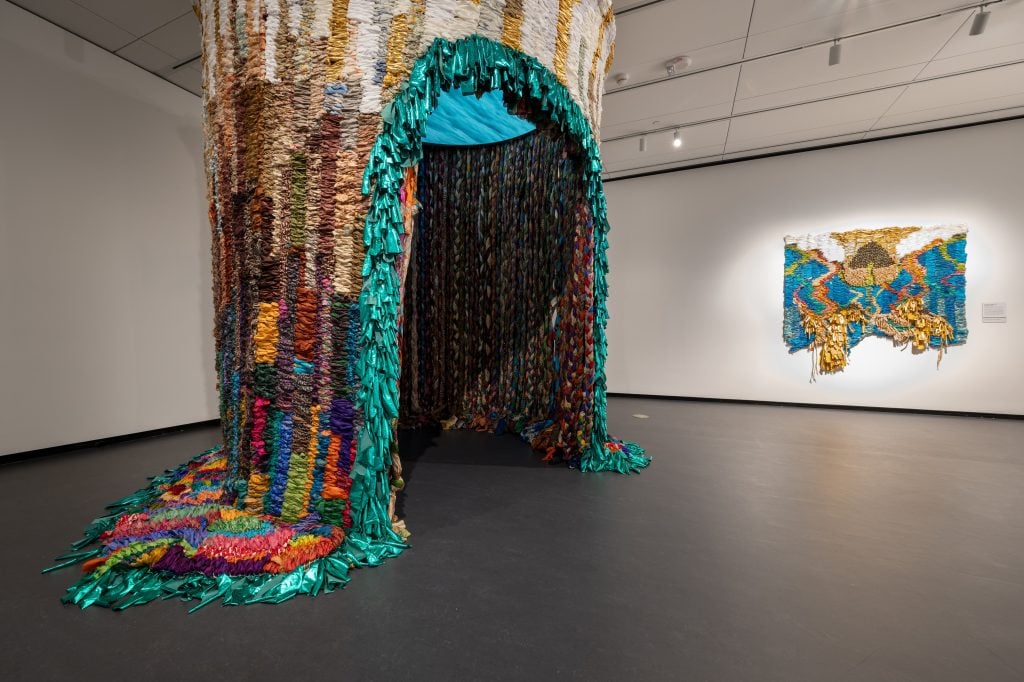
Installation view of “Suchitra Mattai: Myth From Matter” at the National Museum of Women in the Arts, Washington, D.C., showing her large-scale sculpture Siren Song. Photo by Kevin Allen, courtesy of Suchitra Mattai and the National Museum of Women in the Arts, Washington, D.C.
It’s been a busy year for Mattai, for whom her D.C. spotlight is actually her fourth major solo show of the year. (She’s also prepping for a solo booth at the ADAA Art Show in New York at the end of this month with her gallery, Roberts Projects of Los Angeles.)
You can also catch “Bodies and Souls” at the Tampa Museum of Art through March. “We Are Nomads, We Are Dreamers” was on view at Socrates Sculpture Park in Queens through late August, and “She Walked in Reverse and Found Their Songs” closed at the ICA San Francisco last month. It will travel to the Seattle Asian Art Museum in April.
Below, Mattai takes on an inter-continental journey, providing insight into the global inspiration that gives her work its signature color and spark.
Atlantic Ocean
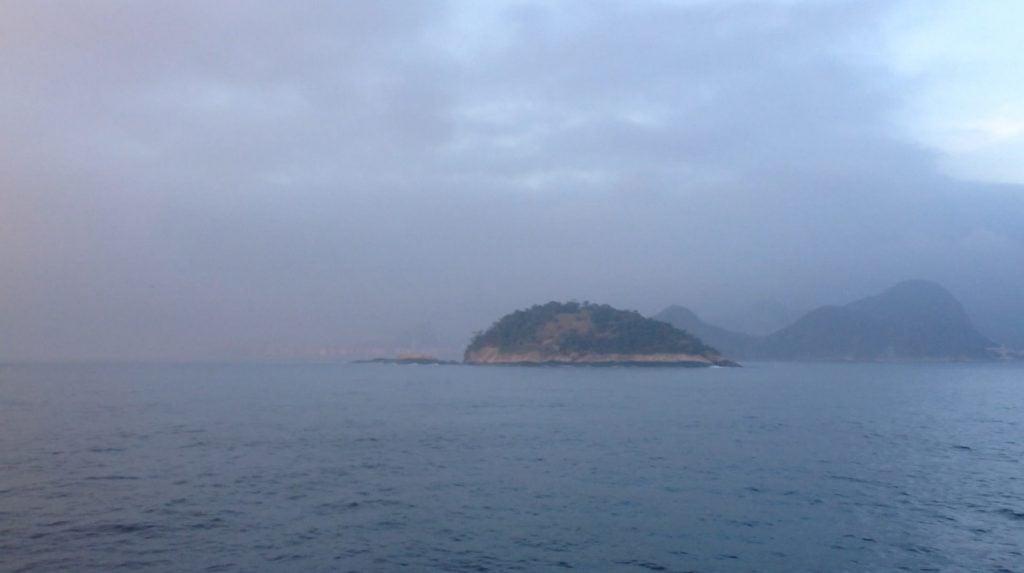
A photo from Suchitra Mattai’s journey across the Atlantic Ocean by ship. Photo by Suchitra Mattai.
Many years ago, I was able to travel aboard a ship on a voyage that retraced (approximately) my ancestors’ passage from India to Guyana. My interest in telling their stories was intensified as I crossed the Indian and Atlantic Oceans to South America. I could hear their voices and felt their presence, so many memories of home, lives lost and the terror of what was to come.
I’ve incorporated videos from this trip into some of my mixed media works, including promised land and siren song.
India
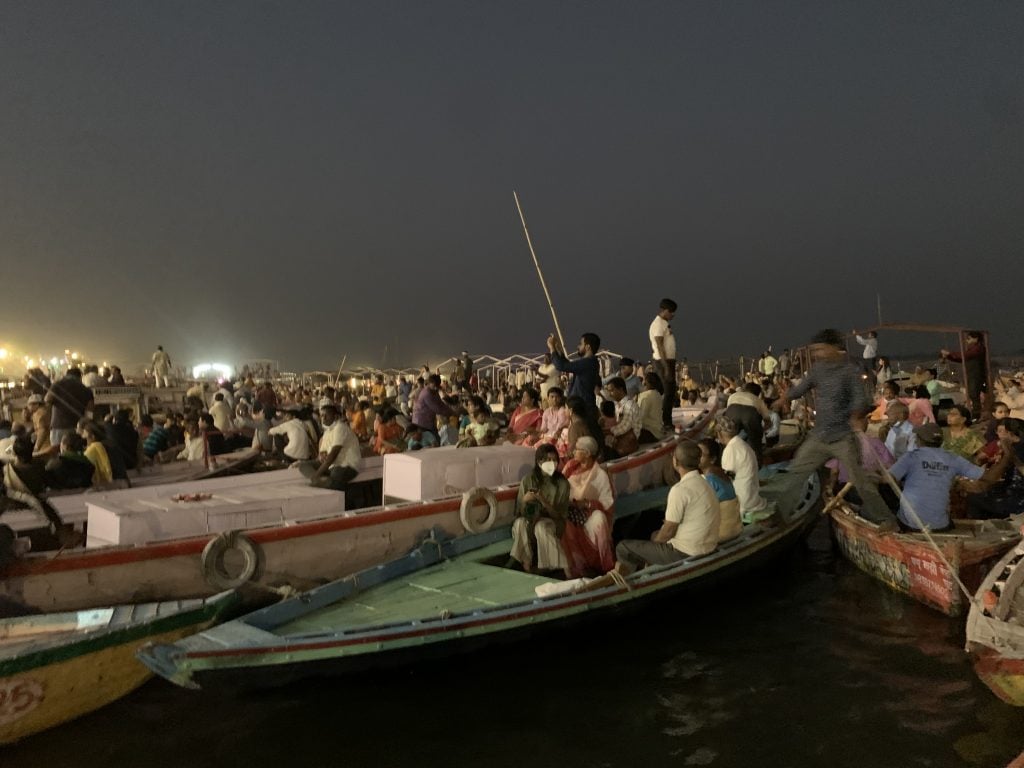
The Ganga River in Varanasi, India. Photo by Adam Graves, courtesy of the artist.
My many trips to India have provided me with the opportunity to research and collect various kinds of materials. I was inspired by Rajasthani textiles and the spirit of the Ganga River in Varanasi. I connected with families of friends, strangers, and searched for objects and materials that inspire me.
My interest in Indian sculpture, in particular, began in the early 1990s. On my first trip to India in 1996, I found a beautiful carved yakshi—female nature spirits that embody fertility and prosperity.
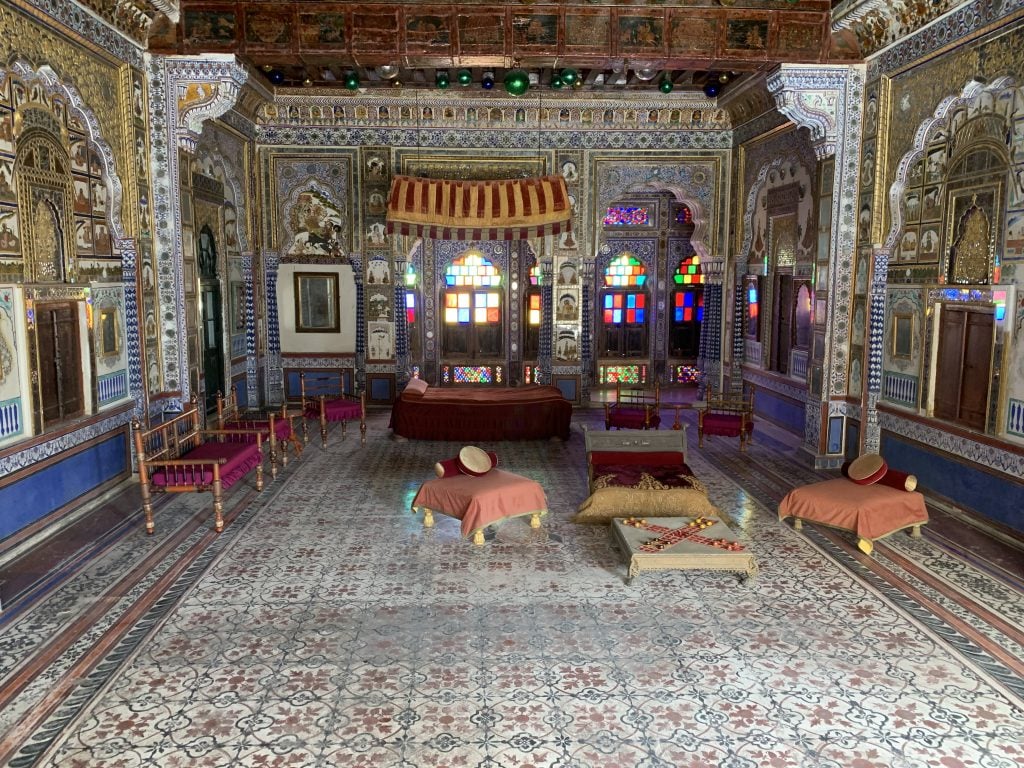
An elaborately decorated chamber in the Jodhpur Palace in Rajasthan, India. Photo by Adam Graves, courtesy of the artist.
This sculpture has been a muse of mine for 28 years. Their potency as sacred objects, their mysterious folkloric origins, and their honoring of women give them a special place in my heart and practice.
I have also repurposed many of the textiles that I brought back from India as gifts for my family. They have come full circle-gifted in multiple directions. They were crafted in India, worn by family whose ancestors once resided there, and then found their way into my work to enrich the stories that I want to share.
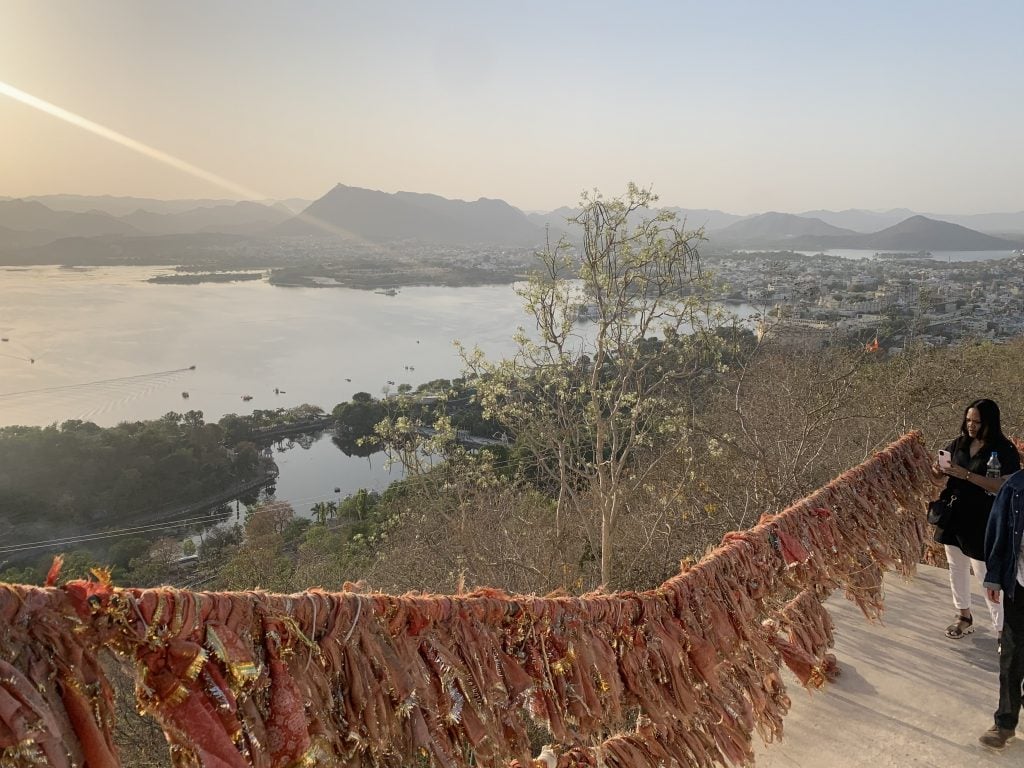
Udaipur. Photo by Adam Graves, courtesy of the artist.
Paris Apartment
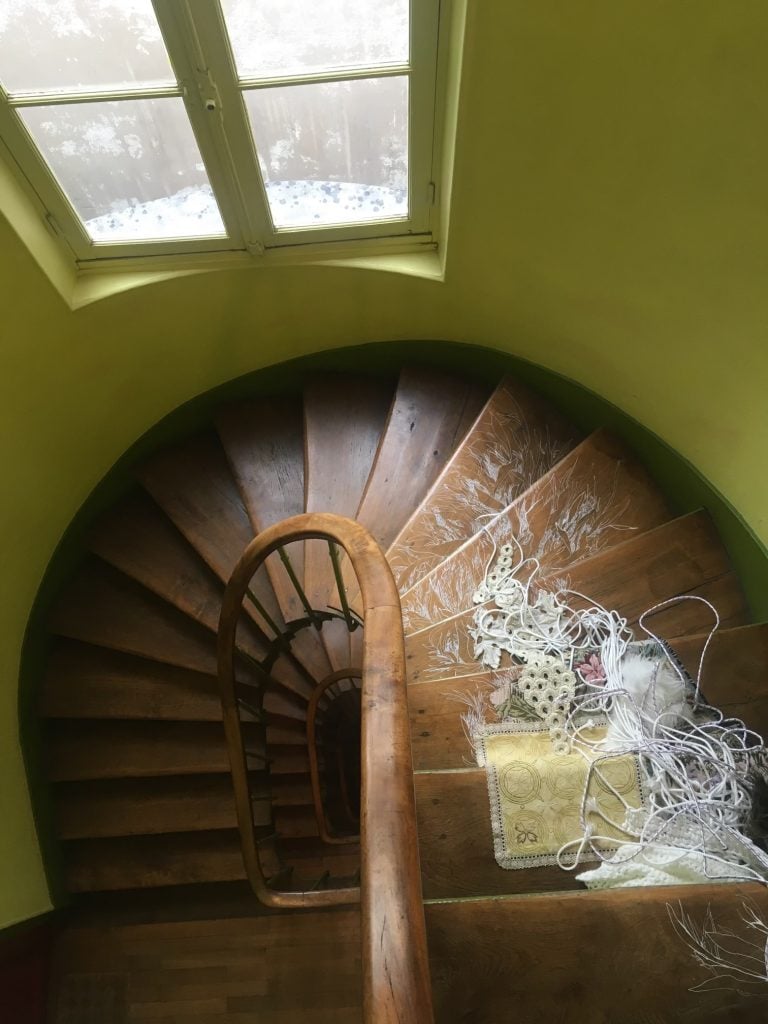
A fiber installation by Suchitra Mattai spilling out of her small Paris apartment and down the spiral staircase. Photo by Suchitra Mattai.
When I travel, I almost always create. Instead of jotting down ideas in a notebook, I find materials where I am staying (coupled with ones that I bring along just in case they are “needed”) and create mini installations and collages. In this photo, my fiber installation spilled out of my small Paris apartment and down the spiral staircase.
U.S.-Mexico border
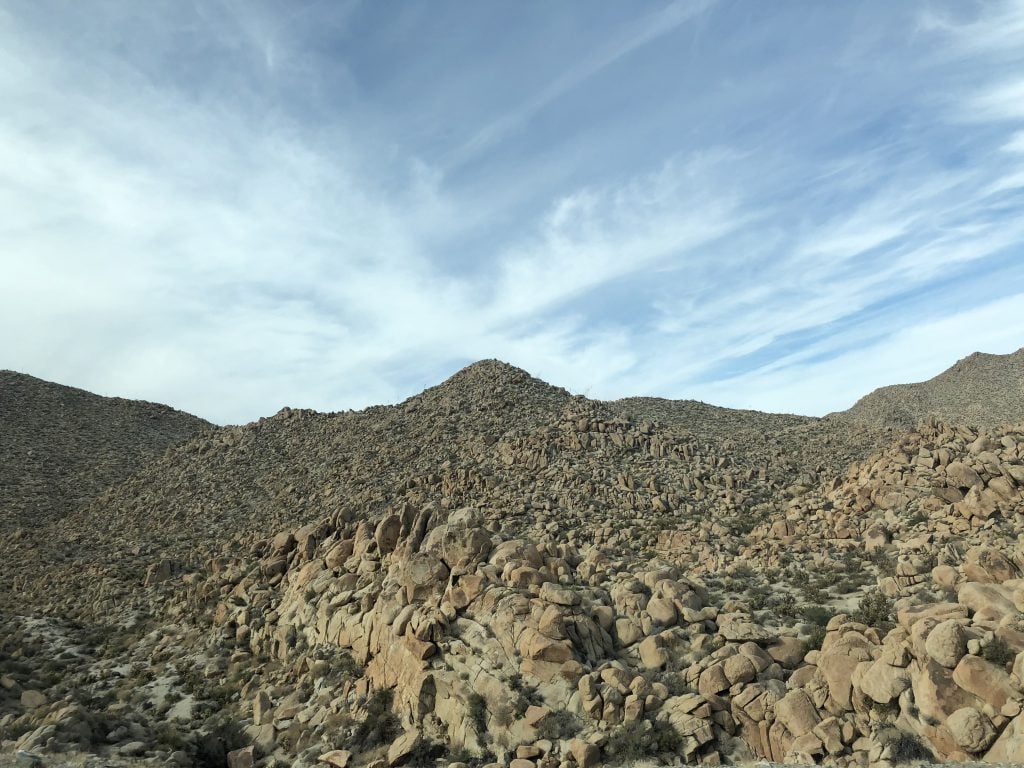
The U.S.-Mexico border. Photo by Suchitra Mattai.
Researching borders, migration patterns, and their social and psychological impacts has led me to many emotionally and politically charged borders. For the Sharjah Biennial 14, I travelled to the U.S.-Mexico border to film the wall as it was being built. Festivals on one side and military helicopters and vans on the other revealed many disparities.
Vintage Stores
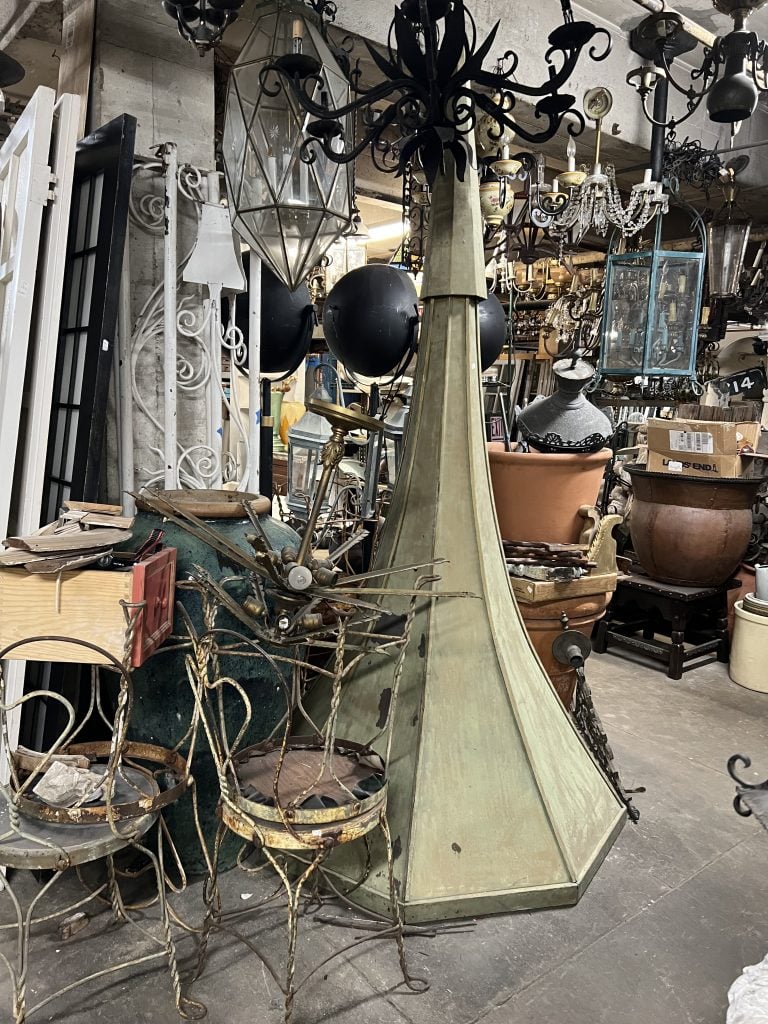
A vintage shop. Photo by Suchitra Mattai.
I scour tons of vintage markets and stores. This is a photo from an amazing warehouse of oddities that is near my studio. Here I find many objects that inspire me. They are like story prompts that glow with possibility. Each object has an unknown history. Whose head lay near this headboard? What does this design reveal about a particular era, people, class, etc. And most importantly, how can I use it to tell a new story?
I also find colonial prints that contain depictions of the “other.” I rework these prints, giving agency to the figures within them.
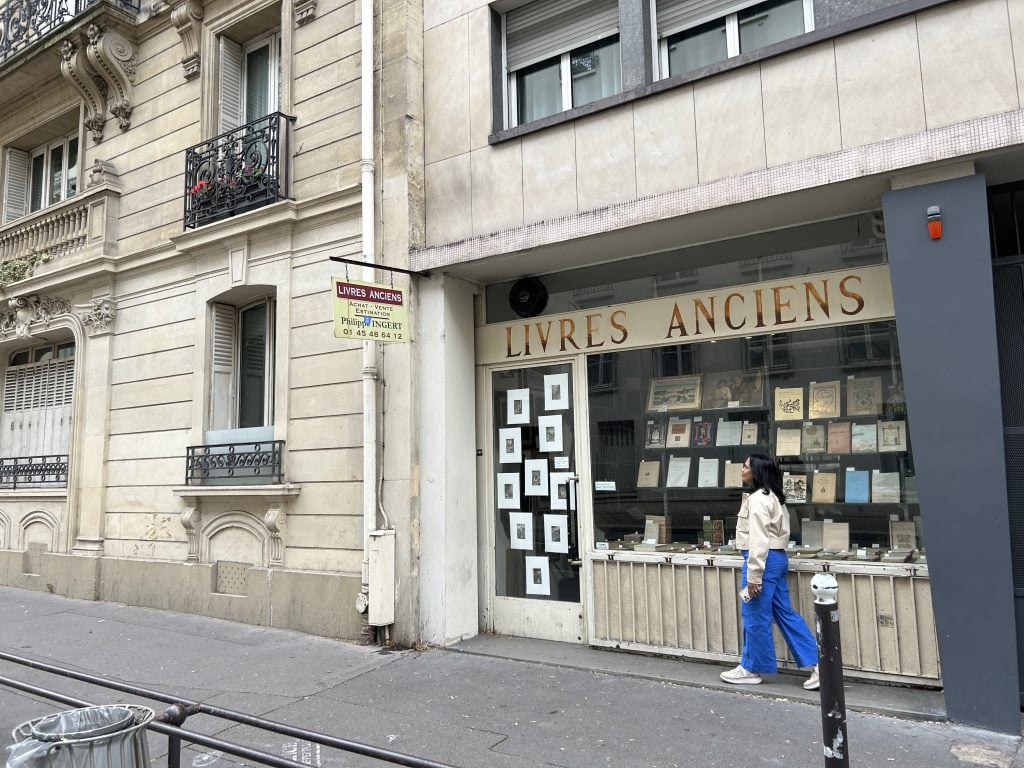
An antique bookshop in Paris. Photo by Adam Graves, courtesy of the artist.
Ultimately, I want to create a new mythology filled with benevolent heroines and goddesses who can carry us into a brighter future. Objects of the domestic sphere tell the stories of families, their joys, trials, and tribulations.
Welcome to Source Material, where artists share their creative journeys beyond the confines of the studio. From hunting down frescos in Florence to chasing storms in Cornwall, we explore the eclectic sources of inspiration that fuel artists’ imaginations.
“Suchitra Mattai: Myth from Matter” is on view at the National Museum for Women in the Arts, 1250 New York Avenue NW, Washington, D.C., September 20, 2024–January 12, 2025.
“Suchitra Mattai: Bodies and Souls” is on view at the Tampa Museum of Art, Cornelia Corbett Center, 120 West Gasparilla Plaza, Tampa, Florida, June 22, 2024–March 15, 2025.
“Suchitra Mattai: She Walked in Reverse and Found Their Songs” will be on view at the Seattle Asian Art Museum, 1400 East Prospect Street, Seattle, Washington, April 9–July 20, 2025.





